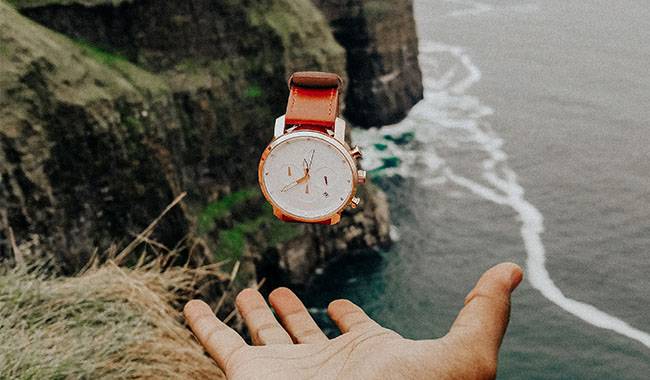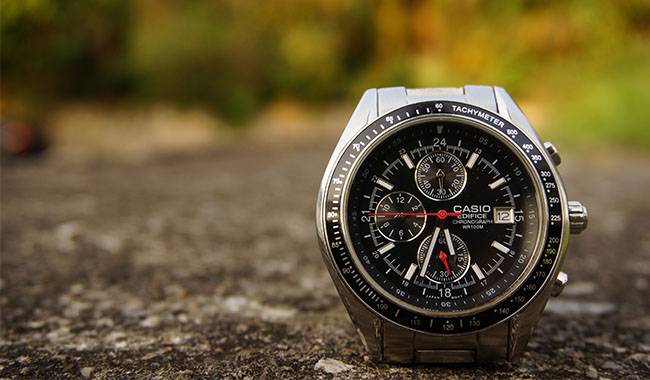
Battery life is one of the most important features of a sports watch. In an urban environment, we don’t usually notice the single charge time of our watches because we always have access to power, and in the hustle and bustle of everyday life, it’s hard to keep track of their standby and training time. But when you’re racing and you want your athletes and your gadgets to perform at their best, that’s when you need to use battery power efficiently. Long battery life is also important for camping or other outdoor activities where you can’t recharge your watch regularly. We have some helpful tips on how to extend the battery life of your watch. You will learn more about How to extend a watch battery lifetime in LCN Outdoors article.
Change GPS Signal Accuracy
The biggest impact on battery life is the accuracy of the positioning data. Using GPS alone rather than in combination with GLONASS or Galileo will reduce speed and accuracy, but will save power and extend battery life. The frequency of data exchange with satellites can also be affected.
Using multiple GPS systems at the same time improves positioning accuracy, but requires more battery resources. And UltraTrac mode allows you to extend your orbit recording time to tens of hours. Image source: dcrainmaker.com
For example, Suunto has 3 data rate options, which you can change in your training or sports profile settings
- Best – Refresh every 1 second.
- Good – Refresh every 60 seconds.
- OK – Refresh every 120 seconds.
Many models have a special Ultra mode where the reduction in GPS positioning accuracy is corrected by the accelerometer – this is Garmin’s UltraTrac and Suunto’s Ultra. in these modes the watch can run continuously for 120 hours with track recording!
Adjust the Backlight Mode
With the settings, you can adapt the backlight to your needs: by gesture, by pressing a button, or by turning on the screen when a notification arrives. However, to prolong the operation, it is best to make sure that.
- is set to the minimum display timeout, i.e. the time when the backlight is active
- is set to the minimum brightness.
- gesture-based backlighting is turned off so that it does not accidentally turn on during hand movements.
- Low screen color mode is enabled (for Suunto).
Disable External Connections
If your goal is to have the longest possible runtime, you may sacrifice some convenient features such as receiving and displaying smartphone notifications on the watch screen by turning off constant Bluetooth sync. Especially since offline trips and camping trips are rarely connected and the messages don’t arrive anyway.
Polar and Suunto have an “airplane mode” that disables all wireless networks, while on the Garmin you can manually disable the connection to your phone.
Disable the Optical Heart Rate Monitor
Measuring your heart rate continuously with an optical heart rate monitor wastes a lot of battery power, so it’s best to turn it off to extend its runtime, even if it’s just in watch mode. For long-distance races, it’s best to use the chest sensor: it’s more energy efficient and gives you a more accurate indication of your heart rate. Usually, wrist heart rate measurement is automatically deactivated when the chest sensor is connected.
Polar has a “night only” heart rate tracking mode, which is really handy when it comes to knowing your sleep quality and heart rate to assess your physical recovery. With Garmin and Suunto, you can measure your heart rate continuously throughout the day or turn it off completely.

Limit Third-party Apps
Processes that run in the background, quietly and little by little, reduce runtime without recharging. These include tracking activity throughout the day, counting steps, and assessing sleep quality. Pretty dials with animations and lots of on-screen data are also less energy-efficient than minimalist dials, which can even hide seconds when no one is looking.
To save battery power during exercise, you can activate a screensaver that shows Polar’s time, while Suunto’s Super Battery mode automatically puts the screen into sleep mode.
Keep Your Watch Warm
Negative temperatures will greatly reduce operating time. Wearing your watch under your outerwear in cold temperatures will keep it warmer and extend operating time.
Example: 400 miles (643 km) ridden in temperatures from 5 °F (-15°C) to -40 °F (-40°C) in one week – with the Suunto 9 watch.
Minimized Notification Sound
The watch notifies you with beeps, vibrating alarms, and backlighting. If you use any alerts in training modes, such as water reminders or heart rate zone notifications, you can select an alert type – either a vibrating alert or an audible alert – to save power. It is worth noting that audible alerts are often inaudible due to extraneous noise or noise from underneath your clothing.
Brief List
A shortlist of menu items to look at before a long autonomous hike or super race to extend the run time of your watch.
- GPS signal accuracy.
- backlight mode.
- Connection with mobile phone/inclusion of “flight mode”.
- Heart rate tracking using optical sensors.
- Alarm signal.
- activity and sleep tracking.
- Appearance of the dial and color of the display.
Charges the battery with solar power, extending the runtime by several hours.
Predicted Clock Runtime
Many models are able to not only display the remaining charge as a graph or percentage but also to predict the operating time. However, this calculated value may differ from the actual value due to changes in conditions during training. This is affected by.
- The stability of GPS signal reception from satellites. If there are obstacles in the form of trees, buildings, and rocks, or if the number of satellites is low, the GPS sensor will consume more energy to track your position.
- View the data on the screen during training. Switching between displays will usually turn on the backlight and consume battery power.
- Activate tracking navigation mode, as this requires the highest GPS accuracy.
You can find more articles and expert talks on Hiking safety on our blog and Sports Marathon YouTube channel.